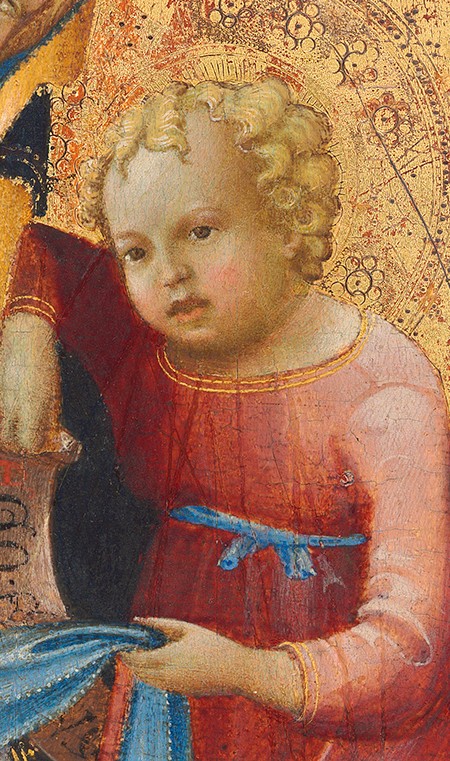Surviving physical and textual evidence suggests that in late medieval and early modern Italy, people marked and modified works of art in situ to a much greater extent than is currently acknowledged in the art-historical literature. During my CASVA residency, I worked on a book that makes visible these transformative interventions and sheds light on an important dimension of reception history that involved complex cultural understandings of the activation, efficacy, and mediation of visual images. This reception history also embraces a broad spectrum of viewers, including nonelite members of society, who are rarely considered in histories of art written about this period.
I focus on panel painting because the material properties of its media, widely utilized in Renaissance Italy, allow one to track the practice of marking and modifying works of art to a greater extent than other media such as fresco or sculpture. The wood support, gesso ground, pigments, and gold leaf have the capacity to absorb and register the marks of sharp implements, so that these marks remain somewhat legible over time. Most of the scratchings and material transformations of panel paintings are not documented and cannot be dated with any precision. I have, however, compiled a rich corpus of more than two hundred fifty examples representing distinct patterns and features that can be tied to late medieval and early modern Italian cultural attitudes and practices and to related textual evidence.
These encompass an intriguing range in the modes of scratching and in the implied tools that must have been used to make the marks: gouges, scrapes, incisions, and blows, some applied with evident force and others with a lighter hand, with more control and precision. There is a range, too, in the kinds of subjects and motifs that are singled out for marking, across a wide variety of pictorial genres and formats. These subjects and motifs include portraits and coats of arms; sensual, seductive bodies; protagonists in secular narratives in domestic imagery; politically charged subjects; animals; imagery related to demons and sorcery; representations of classical antique “idols”; monks and members of the clergy; non-Christian “others”; foreigners; beggars and disabled people; sacred figures in altarpieces and devotional panels; and the faces and limbs of the antagonists in religious narratives. While some of these scratching acts were clearly meant to damage and deface the imagery, others are more constructive and affirmative and include inscriptions, embellishments to the pictorial imagery, and devotional gestures like inscribed crosses and interpretive glosses.
The project is informed by recent scholarship on iconoclasm and graffiti and by current debates about cultural heritage. In considering intentional damage to works of art across historical cultures and geographies, scholars argue that the breaking of images operates in a dialectical relationship between destruction and construction, as defacement calls attention to that which has been damaged or removed, reinforcing the very power of the imagery in the process. Meanings change significantly when works of art are damaged, and many continue to have active afterlives in their modified states. Rich contexts for interpretation open up when the complex conditions, motivations, and power relations involved are explored—and not just during moments of conquest, or the heightened antagonism between proponents of opposing religions, or during regime changes.
Within late medieval and early modern Italian discourses, the intentional scratching of an image could be construed as a kind of disrespectful blasphemy and as a variety of religious piety. It could also be considered a licit form of superstitious behavior, tolerated by ecclesiastic and civic authorities, and a justifiable retaliation against public figures fallen out of favor, following the ancient practice of damnatio memoriae. I situate and contextualize the scratching of different types of imagery within different social domains and in relation to cultural practices and discourses. I consider scratching acts and the culture of sgraffito; devils, diabolical agency, and the inspiriting of images; damnatio memoriae and political conflict; secular imagery on domestic furniture; changing valuations of visual art and artistic heritage; violent and punitive engagement with religious narrative on altarpieces; and sacred images, blasphemy, and miraculous image cults. My study offers both a point of comparison for studying similar phenomena in other cultures and a prehistory of image transformation preceding the eruption of confessional debates about the use and efficacy of images during the Protestant Reformation and Catholic reform in Europe.
